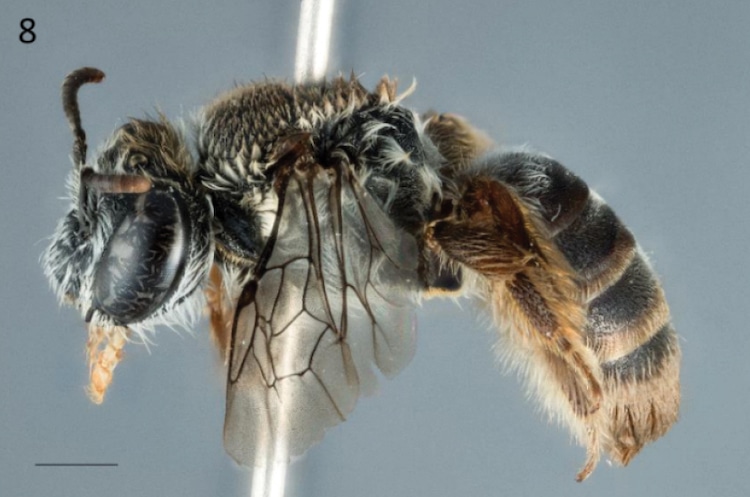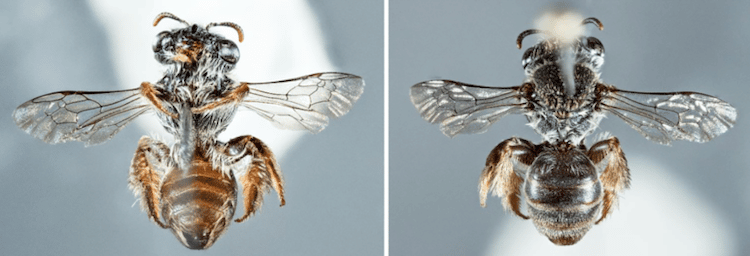
Photo: K. S. Prendergast (CC by 4.0)
Every scientist dreams of naming a new species and Dr. Kit Prendergast from the Curtin School of Molecular and Life Sciences in Perth, Australia, recently got that chance. The ecologist was surveying native bee species at Perth’s Kings Park botanic garden when she came across an unusual bee with a distinct snout.
Taken aback by what she’d seen, Dr. Prendergast started scouring photos of native bees and looking at specimens in different museum collections. To her surprise, she wasn’t able to find much. In fact, taxonomists at Perth’s Western Australian Museum told her that it was probably a new species.
Eventually, Dr. Prendergast was able to find a few specimens of the bee in the museum’s entomology collection from the 1970s, but they’d never been scientifically described. That’s not completely unusual, as the ecologist estimates that less than half of Australia’s native bee species have been identified.
In a new article published in the Journal of Hymenoptera Research, Dr. Prendergast reveals her full findings about the bee. This also includes the name of the species. As is customary, the scientist who finds a new species gets to name it. In this case, Dr. Prendergast decided on the name Leioproctus zephyr.

Female “Leioproctus zephyr” (Photo: K. S. Prendergast, CC by 4.0)
“Not only is this species fussy, they also have a clypeus that looks like a snout. Hence, I named them after my dog Zephyr,” she shared. “She has been so important to my mental health and well-being during the challenging period of doing a Ph.D. and beyond.”
Since bees don’t have noses, the protrusion on Leioproctus zephyr‘s face doesn’t have anything to do with smell. Instead, Dr. Prendergast suggests that the protrusion helps the bee forage a very specific type of native pea flower.
“They’ve got this flower structure where the petals have sort of a keel and inside the keel is the nectar and pollen, and it needs to be pushed open to access those rewards,” she explains. “It seems like this snout in the middle of its face is used to push up in the keel so it can easily access the nectar.”
The discovery of this unusual native bee, and its restricted habitat, shows the importance of planting native flowers and maintaining bushland remnants even in urban spaces. Since little investment is given to monitoring the population of native bees, it’s difficult to tell when a population declines. So, for now, favoring native flowers over exotic flowers can give these bees a fighting chance.
h/t: [ABC News]
Related Articles:
Researchers Discover New Species in the Deep Seas of Costa Rica
Stunning New Red Jellyfish Species Photographed in the Deep Sea
Scientists Discover New Rainbow-Colored Fish Species in the Maldives
Two New Species of Peacock Spiders Discovered with Amazingly Striking Patterns
